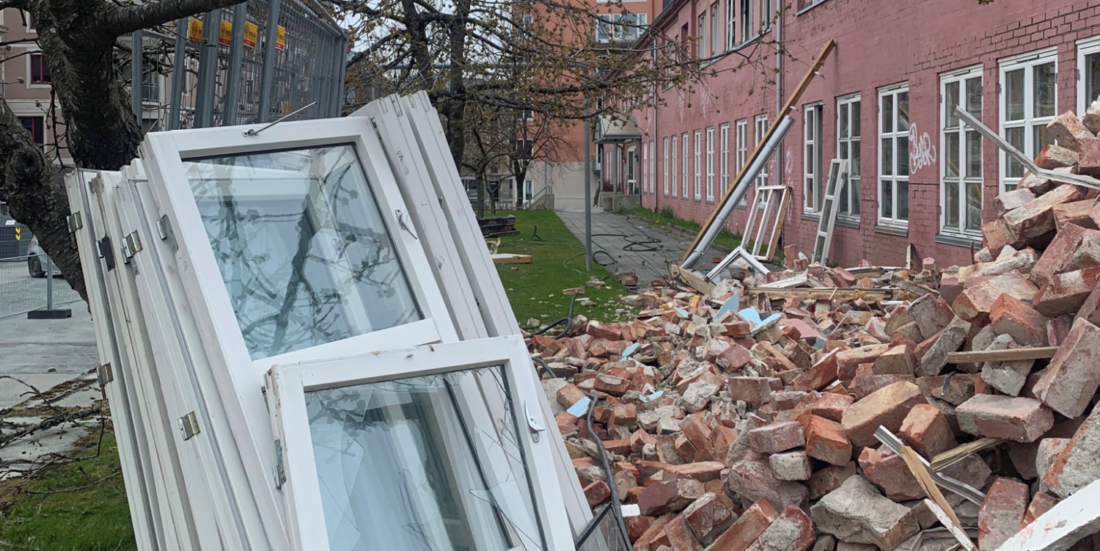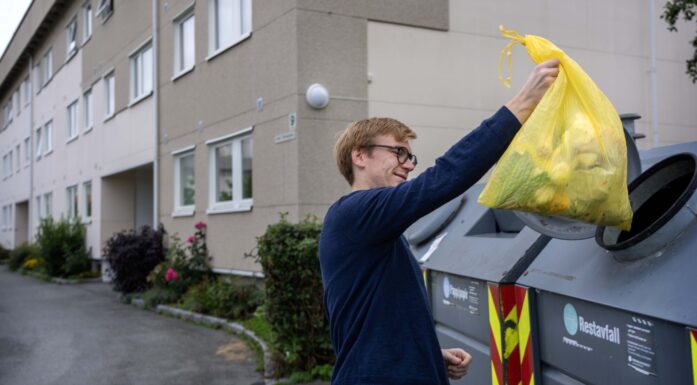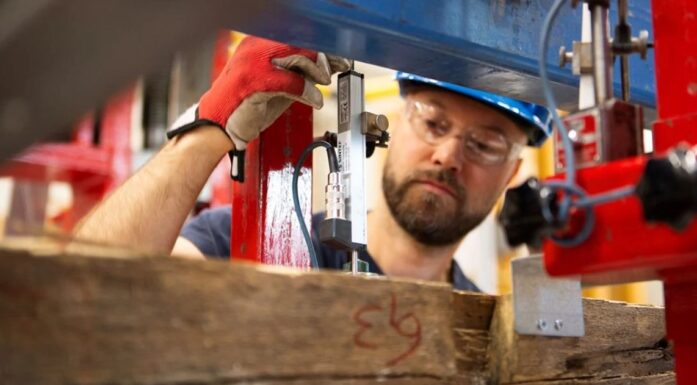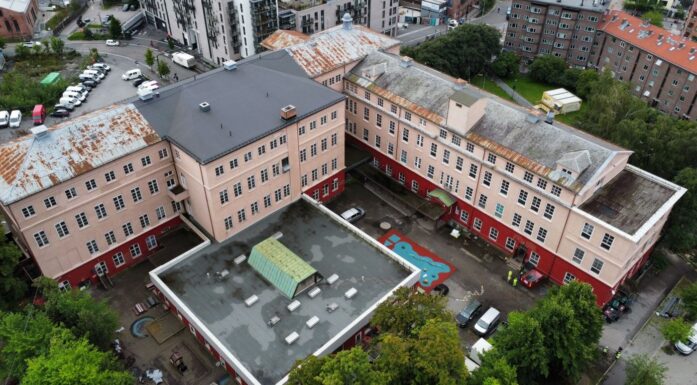Reuse enthusiasts want used materials on sale in builders’ merchants
Norway has declared ambitious targets for waste reduction in the building industry. Researchers have been asking sector representatives what needs to be done to achieve them. This article lets you in on some of the answers.
Norway has declared that 70 per cent of all its building waste must be reused or recycled with the aim of reducing greenhouse gas emissions and waste from the sector, while at the same time conserving natural resources.
A number of measures have already been implemented to achieve this target as part of amendments made to national statutory building regulations. These include new requirements to evaluate the reuse of potential of materials following building demolition. Moreover, responsibility for the documentation of building materials has been transferred from the vendor to the purchaser. Norway is now also implementing financial support schemes, accompanied by prepared guidelines, designed to promote more sustainable procurement practices in the public sector.
But what do reuse enthusiasts think about these measures? Are they sufficient to result in higher levels of materials reuse? This is what researchers involved in the REBUS project (REuse of BUilding materialS – a user perspective want to find out.
Interviews with reuse enthusiasts
The researchers interviewed representatives from manufacturing and consultancy firms, as well as municipal employees who all participate in a network promoting the reuse of building materials. These people are thus more than moderately interested in the idea of materials reuse, and as such not entirely representative of the Norwegian building sector as a whole. However, this makes them all the more up to speed when it comes to being mindful of how the legislative changes and support schemes are working in practice. They are also well aware of the barriers standing in the way of greater materials reuse.
For this reason, the researchers asked what their respondents thought about the regulatory framework around reuse in Norway, and how contractual terms, legislative changes, guidelines and financial support schemes currently impact on levels of reuse.
The responses revealed that there is a high degree of unanimity in terms of the challenges we face. Respondents are satisfied in general with the legislative changes and support schemes, but believe that the public authorities should go even further when it comes to facilitating real materials reuse, and avoid simply supporting the ‘bureaucracy’ surrounding the issue in the form of assessment reports and feasibility studies. Many respondents highlighted that the reuse of building materials is currently very expensive, not least because it takes more time than when building with new materials.
“We live in hope that both the authorities and the construction sector are listening to what they say as part of their pioneering efforts to make it easier to reuse building materials”, says Åshild Lappegard Hauge, who is Professor of Environmental Psychology at the University of Oslo.
Used materials must be on sale in builders’ merchants
If you want to build something with used materials, it isn’t always easy to find someone who can offer you the materials you need. In order to make used materials more accessible, the study respondents are suggesting that companies retailing new building materials should also be offering used product.
They also want to see the establishment of a universal digital portal for reused materials available on all current builders’ merchants’ websites. Such a portal should also offer reuse assessment reports and a database of donor buildings and potential storage locations.
As used materials become more readily accessible, the need for documentation and the maintenance of used product will increase. An effective system for the documentation of materials’ properties will thus become essential.
We will never meet our targets unless the entire industry steps up. Restructuring of the sector will require expertise, resources, motivation and, above all, mutual trust that everyone involved is pulling their weight.
“We already have an effective system in place for the documentation of new building materials”, says Thale Plesser at SINTEF. “However, some adaptations will be needed to accommodate used materials. Among other things, we need to develop non-destructive testing and assessment methods with the aim of sorting materials that are suitable for reuse from those that are no longer viable”, she says.
The study respondents are pleased that the current Norwegian statutory building regulations now state that it is the purchaser, not the vendor, who is responsible for documenting the quality of used building materials.
Logistics and storage are among the biggest challenges linked to materials reuse. Smaller volumes of new building materials will make more space available for used materials, which is sorely needed.
“Today, you have to be something of an idealist to invest any effort in the reuse of building materials”, says Plesser.
Fortunately, there are some enthusiasts around who are showing the way. For example, a reuse centre has been established at Økern in Oslo, serving as a market not only for used building materials, but also for waste materials obtained from building sites.
“Many municipalities are also ahead of the curve”, says Plesser. “Some have launched a number of reuse initiatives. We’re also seeing that some local, small niche, actors are focusing on materials reuse”, she says.
Reuse has to be rewarded
Nevertheless, Plesser thinks that it will still be some time before we see materials reuse being implemented at a really large scale.
“This will require a restructuring of the entire building sector”, she says. “In order for this to happen, the pioneer enthusiasts have to be successful in showing that businesses can be profitable on the back of reuse. What we need now is lots of investment and enthusiasm”, says Plesser.
This is why the concept of reuse must be promoted not only with legislation, but also with a variety of incentives. For example, the study respondents are proposing the cheaper and more rapid processing of building applications for developers who opt to use used materials.
Facts about the REBUS interview study:
In Norway, waste materials from building and construction activities constitute as much as 40 per cent of all waste produced. Moreover, the building sector is responsible for about a third of all global CO2 emissions.
The report ‘Ombruk av byggevarer – innspill til statlige føringer’ (The reuse of building materials – input to Norwegian state legislation and guidelines) is based on group interviews with members of a network promoting materials reuse in the building sector.
The investigation is a subactivity incorporated in the research project REBUS (REuse of BUilding materialS – a user perspective), which has a term extending from 2020 to 2024. The main aim of the project is to develop knowledge that will enable the greater reuse and recycling of building materials.
REBUS is funded by the Research Council of Norway’s as part of its MILJØFORSK programme.
Project participants include architects, engineers and environmental psychologists. The project partners are SINTEF, the INN University of Applied Sciences, the Boligbygg Oslo housing development agency, the inter-municipal building innovation programme FutureBuilt, materials reuse specialists Resirqel AS, the Danish Building Research Institute (SBI) and the IVL Swedish Environmental Research Institute.
The building sector is invited to a presentation of the results of the REBUS project at a seminar in Oslo on 29 November.
Some study respondents are asking why the authorities believe that achieving ambitious environmental targets will be less expensive in the long term. They are concerned because it is usually more expensive to achieve high ambitions, and in many situations materials reuse costs more than the use of new materials.
They suggest that financial support can be based on the difference between expenditure in new materials and that linked to reusable goods.
“We will never meet our targets unless the entire industry steps up”, says Plesser. “Restructuring of the sector will require expertise, resources, motivation and, above all, mutual trust that everyone involved is pulling their weight. It’s no use hoping that the industry will change its habits without a combination of directives and incentives supplied from the outside”, she says
More collaboration
Another issue raised time and again by the study respondents was that in order to achieve higher levels of reuse, they wanted to see greater levels of collaboration between those actors placing orders for materials and those carrying out the building projects. They were keen to promote the idea that so-called ‘collaborative construction solutions’ offer an effective basis for materials reuse in connection with building projects.
“The use of dialogue conferences prior to the placement of orders for materials may offer a way of achieving better collaboration, but this was received as an entirely new concept by many of the respondents”, says Professor Hauge.
Even stricter requirements
A legal requirement to evaluate materials reuse as part of the building demolition process was introduced in Norway on 1 June this year. This is all well and good, the study respondents point out, but the reports from such evaluations should also be published and made searchable online so that all those interested can see what materials are available.
They also want to see the public authorities stipulating requirements not only for documented evaluations, but also for actual reuse in projects. One of the respondents put it this way:
“For example, in particular I think that if we say that we’re not responsible for the level of materials recycling, and that the recycling sector alone should be taking care of this, then this an abdication of our responsibility”.
Click here to download the report (in Norwegian).





